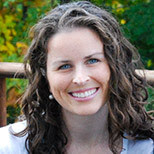May 16, 2019 — Ruth Deuel was a computer programmer at the University of California, Berkeley, when she became pregnant with her second child in 1961. Deuel, who always had shown an aptitude for math, didn’t think twice when asked to participate in a health study at the Kaiser Permanente hospital in Oakland where her daughter, Jennifer Iscol, was born in February 1962.
“I didn’t want to be one of those missing data items that are the bane of every scientist’s existence,” remembers Deuel, now 85.
Deuel is one of more than 15,000 northern California women who voluntarily joined the Berkeley-based Child Health and Development Studies (CHDS) between 1959 and 1967, shortly before giving birth. The expectant mothers were a cross-section of San Francisco Bay–area culture in the 1960s. They were civil rights activists, hippies, intellectuals, students, farmworkers, nurses, newspaper reporters and housewives; white and black, Latino- and Asian-American. Each contributed vials of blood, urine and saliva and completed extensive interviews about health and lifestyle factors that could influence the progress of pregnancy and infant development.
Now in its seventh decade, the CHDS is one of the world’s longest running and likely one of the most diverse familial health studies. Deuel’s family and others have contributed invaluable data — the health of these women, their children and their grandchildren has been chronicled in hundreds of scientific papers. These studies are poised to help answer some of the most vexing questions about the impact of environment on our health.
Early Exposures, Later Diseases
Our risk of developing many common ailments — including cancer, diabetes, heart disease, obesity, dementia and inflammatory autoimmune disorders — can be chalked up to a combination of our unique genetic susceptibilities and a slew of external factors that influence the environment in which we live. Researchers agree that it’s important to determine what these external factors are — and what role they play in the development of a given disease — because, unlike our genes, we can theoretically change things in our environment that heighten disease risk.
But teasing out the role of environment has proved more complicated than simply identifying the behaviors, stressors and exposures that make up a person’s lifestyle and environment at the time of illness. Researchers are increasingly realizing that we’re more vulnerable to environmental changes and exposures during some life stages than others. Our environment before we’re born now appears critically important in predicting disease later on. In many cases, the long lag time between exposure and symptoms makes it extremely difficult to study — and prove — the link between environment and ill health.
Long-running studies in which scientists collect data from a group of people at different points over the course of their lives are one way around that. In fact, these so-called “cohort studies” are among the best tools scientists have for finding and substantiating links between environmental exposures in early life and long-term health outcomes, says Suzanne Fenton, a reproductive endocrinologist at the National Institute of Environmental Health Sciences in Research Triangle Park, North Carolina.
Gathering Data
Andrea Hesse, now 59, vaguely recalls her mother taking her to a second-story walk-up in her hometown of Berkeley, California, when she was 6 or 7 years old. There, other adults watched her put together puzzle pieces. While the memory seems a bit odd now, there would have been nothing unusual about it at the time, says Hesse. Contributing to the social good through experimentation in education and other areas of civic life, seemed the norm to her at the time. “And this study felt like a part of that,” she says.
Later on, in young adulthood, and again in her 30s or 40s, she answered questions in interviews about her health habits. Hesse’s mother joined the CHDS while pregnant with her in 1960. Researchers have been collecting and preserving data from Hesse and other “second generation” study participants since before birth. As these kids grew older, the type of questions that researchers could address with the data became more complex.
Early studies dealt with straightforward questions — whether a mother’s smoking affected her baby’s height and weight, for instance. Now that these babies have reached middle age, some have experienced health problems. Hesse, who now lives in Santa Cruz, was diagnosed with stage III colon cancer at age 49. Researchers who study the cohort now can look at whether prenatal exposure to certain chemicals can predict the development of cancer decades later.
In several research papers, scientists studying the CHDS have linked exposure to the now-banned insecticide DDT during sensitive periods of development in utero and during puberty to a heightened risk of breast cancer for women in their 40s and 50s.
“The Child Health and Development Studies has been a vitally important resource for understanding environmental chemicals and breast cancer,” says Julia Brody, executive director of the Silent Spring Institute, a Massachusetts-based nonprofit research group studying breast cancer and the environment.
While DDT may have been banned for use in the United States decades ago, thousands of chemicals on the market today — for which long-term human data remain limited — have been linked to an elevated risk of breast cancer and other diseases.
Per- and polyfluoroalkyl substances (PFAS) are one example. They’re a group of human-made chemicals used in nonstick cookware, firefighting foam, food packaging, cosmetics, and stain- and water-repellent materials. PFAS are showing up in high levels in drinking water in many communities across the country. Early studies have linked some PFAS to health conditions, including kidney cancer and thyroid problems.
Because these chemicals can build up in people’s bodies over time, long-term studies in humans will be important in understanding the health consequences of these exposures and whether certain groups — for instance, pregnant women, fetuses or children — are more susceptible to their effects.
“Our cohort can help answer these questions now without having to wait 60 more years. We have multiple generations of blood and urine samples already banked,” says epidemiologist Barbara Cohn, director of the CHDS.
A Family Affair
There are very few long-running studies in the world that can boast that kind of multigenerational data. The U.S.-based Nurses’ Health Study, which started in 1976, and the U.K.-based Avon Longitudinal Study of Parents and Children, which started in 1991, are examples of others, though none has run as long or coincided as closely with the rapid period of lifestyle and environmental change that has occurred since the mid-20th century as the CHDS.
Alessio Fasano, a pediatric gastroenterologist at Massachusetts General Hospital in Boston studies celiac disease — a condition that few people were talking about, let alone studying, when the CHDS started recruiting pregnant women 60 years ago. Like other autoimmune inflammatory conditions, celiac disease is on the rise. Fasano points to a doubling in the number of new celiac disease cases in the U.S. every 15 years since the 1970s. Doctors aren’t sure why. Changes in environment and lifestyle over the past several decades likely play a role.
“Three generations ago, we lived a completely different lifestyle. The environment has changed dramatically. These things could have an impact on our health, but we’re not exactly sure which things,” says Fasano.
Fasano and colleagues now have started to analyze data from the CHDS to see whether they can identify which changes in lifestyle and environmental exposures across the three generations of California families might help predict who gets celiac disease. “This is a one-of-a-kind opportunity to establish what changed intergenerationally in the environment and how that relates to disease risk,” says Fasano.
Long-running multigenerational cohorts like these are irreplaceable and should be treated with the same reverence as a national monument or a UNESCO World Heritage Site, says Fasano, because of the value they hold for humanity both now and in the future. “We as a species need to recognize that these are something so precious and valuable,” he says.
Ruth Deuel hopes that her participation and that of her family can continue to serve as a “treasure trove” of data for Fasano and other researchers. Deuel’s granddaughter, Isabel Katz, a college sophomore and third-generation study volunteer, agrees. “As a participant, I knew I couldn’t be replaced,” she says.
Katz, whose brother has celiac disease, is excited to see what researchers can learn. She says her family’s ongoing participation in the study has strengthened the connection among three generations. “It’s another way to tie us together,” she says.
Indeed, these long-term studies tie us all together, because what researchers are able to find out from the data they provide has major implications for everyone.
Related Posts
Ensia shares solutions-focused stories free of charge through our online magazine and partner media. That means audiences around the world have ready access to stories that can — and do — help them shape a better future. If you value our work, please show your support today.
Yes, I'll support Ensia!




